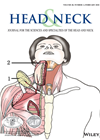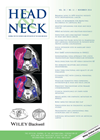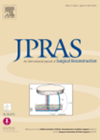
Journal Reviews
Fibula free flap virtual or freehand planning and the efficiency of surgery
This is a systematic review from surgeons in Italy and Florida where, from an initial 799 potentially relevant articles, only six could be included. Efficiency was assessed by the mean ischemia time which, for the virtual group, was 73.8 minutes,...
Microvascular free flap failures – looking beyond surgical technique
Microvascular free flaps are commonly used in reconstruction for head and neck defects. Failures of these flaps, however, are associated with a significant morbidity and mortality. Flap failures within the first 72 hours are commonly attributed to technical failure of...
Surgical management of refractory osteoradionecrosis
This is a French single-centre, 10-year experience of 55 surgical resection and reconstruction procedures. They claim an overall effectiveness rate of 92.3%. A total of 36 segmental and 19 marginal mandibulectomies were performed. A variety of free flaps were used,...
Pedicle calcification – an uncommon problem
This paper from Germany describes an uncommon phenomenon of pedicle calcification in three cases. In patients from two centres that had fibula free flap reconstruction from January 2010 to January 2016, 68 cases had pedicle calcification and three cases were...
Delirium post-op
This is a retrospective study from Japan analysing 102 patients who underwent oral cancer resection and free flap reconstruction. Postoperative delirium occurred in a third of these patients. An increased risk was identified in those with high preoperative albumin, postoperative...
One anastomosis or two
This is a cumulative meta-analysis from Hong Kong reviewing 27 articles and a total of 7,389 flaps. The authors, at the outset, acknowledge that the number of anastomoses is not the only factor of venous compromise and flap failure. Nonetheless...
What is the evidence for duration of antibiotic prophylaxis in head and neck free-flap cases?
The topic of this systematic review is one which is commonly heard in discussions between microbiologists and head and neck surgeons – what is the evidence for antibiotic prophylaxis in clean-contaminated free-flap cases, and crucially, how long should antibiotics be...
Risk factors in free flap failure
This is a retrospective analysis from China of 881 free flaps over nearly four years, 49 of which were ‘taken back’, 26 of which were lost, giving a 97% success rate. The commonest cause of flap failure was venous thrombosis....
Surgical voice restoration after laryngopharyngectomy
Voice restoration is one of the key rehabilitative steps after laryngectomy or total laryngopharyngectomy (TLP). Patients who undergo TLP require reconstruction – increasingly commonly with microvascular free flaps. Despite their advantages in terms of fistula rates and swallowing outcomes, these...
Hyperbaric oxygen therapy and flap reconstruction: does it help?
This is a multicentresite retrospective review from four clinics in the USA on patients who received radical debridement and free flap reconstruction for osteoradionecrosis (ORN) between 1 Jan 1995 and 30 June 2011. Patients were stratified divided based on having...
Multiple free flaps for head and neck cancer
Most patients with advanced head and neck cancers now undergo microvascular free flap reconstruction. This is mainly as flaps facilitate complete tumour and margin removal by providing reliable wound coverage and better restoration of form and function. However despite this,...
Free flap reconstruction in stage three bisphosphonate-related osteonecrosis
There is no widely accepted gold standard for the treatment of bisphosphonate-related osteonecrosis of the jaw (BRONJ). Early BRONJ is managed conservatively but there is controversy regarding the treatment of the later stages. Stage three is defined as exposed bone...















